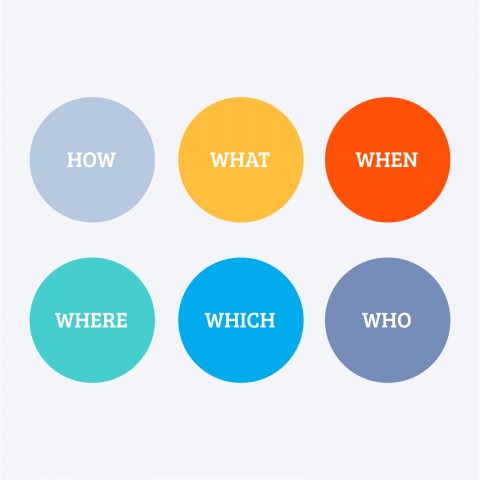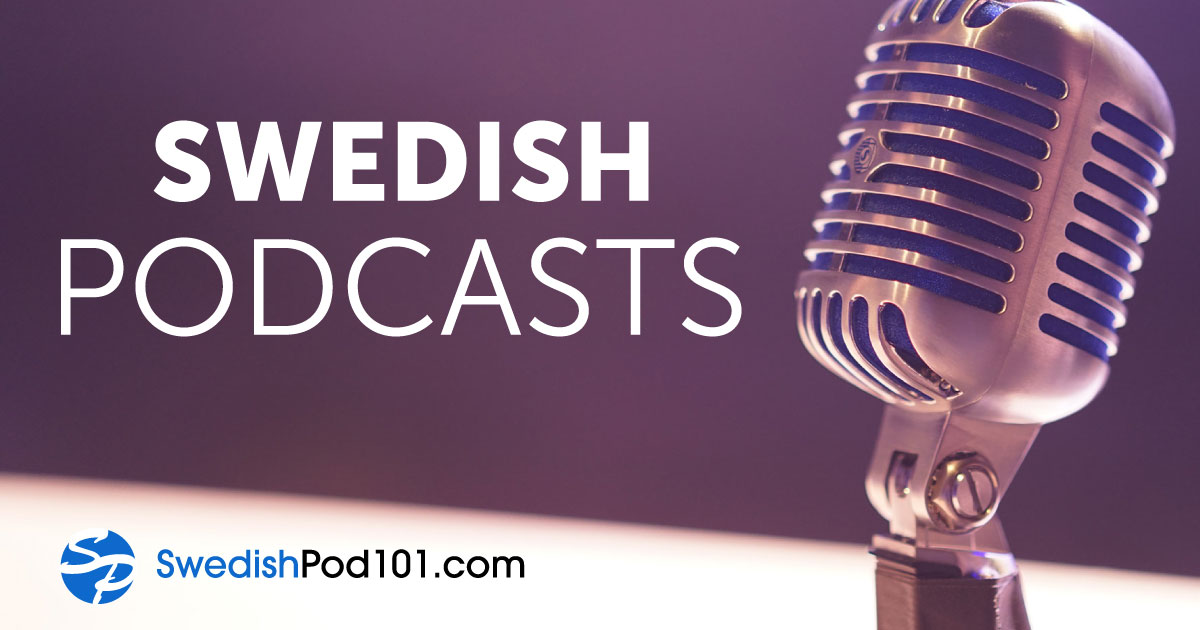
Many say that conversation is an art. And more than that, conversations are our primary way of getting to know other people. There are conversations for every situation, and a good one should address topics that are of interest to both people.
The best way to start a conversation is by asking a question. But asking questions in a foreign language can feel intimidating, especially when you’re not sure what kinds of questions to ask in the first place.
Learning how to ask questions in Swedish is one of the first steps that students of the language must take, after basic greeting phrases. This is mainly because questions are such a good way to start a conversation, and the trick to learning any new language is to practice as much as possible.
When you’re a beginner, it might feel a bit scary to start speaking. But remember that practice makes perfect, and that Swedes are kind and forgiving when it comes to language mistakes. The fact is, they’ll probably be impressed that you know any Swedish at all!
- → In this article, we’re going to focus mainly on common Swedish questions and answers. If you want more information on what an introductory conversation would look like, read our relevant article!
 Table of Contents
Table of Contents
1. The Basics
Before we move on to our guide on the top Swedish questions for beginners, there are a few things you need to know. Namely, the Swedish question structure and question words. Let’s take a look.
Swedish Question Words

A question in Swedish will usually start with a question word. Here’s a quick table for you:
| What | Vad |
| Which (singular) | Vilken |
| Where | Var |
| When | När |
| Who | Vem |
| Whose | Vems |
| Why | Varför |
| Which (plural) | Vilka |
| From where | Varifrån |
| How | Hur |
Swedish Question Word Order
Learning the Swedish question structure can be difficult for new learners, especially those who speak English as their first language. But there’s a simple pattern for you to memorize:
Question Word + Verb + Subject
Here are some examples:
- Where are you from?
| Question Word | Verb | Subject | Complement |
| Var | kommer | du | ifrån? |
| Where | come | you | from? |
- What is Lisa doing?
| Question Word | Verb | Subject |
| Vad | gör | Lisa? |
| What | doing | Lisa? |
- → Interested in learning more? SwedishPod101.com has a page dedicated to the basics of Swedish grammar for you to study!
2. The Top Swedish Questions and Answers
Without further ado, here are the basic Swedish questions every new Swedish learner should know, and how to answer them yourself!
1 – What’s your name?

In Sweden, it’s important to introduce yourself properly before diving into the questions. Keep in mind that in Sweden, you don’t need to use titles such as “Mr.,” “Mrs.,” or “Dr.” when addressing someone. In addition, you needn’t worry about using a person’s last name either. You can and should use first names only, regardless of whether you’re speaking with a new friend, a manager, or a colleague.
Introducing yourself in Swedish is pretty straightforward. Here’s an example of how you can begin the conversation:
- Hej jag heter ___. Vad heter du?
“Hello, my name is ___.” What is your name?”
The person you’re talking to will respond with:
- Hej, jag heter ___, trevligt att träffas!
“Hello, my name is ___, nice to meet you!”
And you should respond:
- Trevligt att träffa dig också!
“Nice to meet you too!”
2 – How are you?

In British and American culture, a “How are you?” can be thrown into a greeting with no expectation of an answer. But the importance of this question in Swedish can’t be overstated.
When Swedes ask this, they really want to know. They’re not asking just to be polite!
In Swedish culture, asking how someone is signifies that you care about that person, and it plays an important role in the conversation. Asking this question can establish the status of the day, and maybe even give you or your friend the opportunity to complain a little or talk about your fantastic day.
Here’s an example conversation:
A: Hur mår du? (“How are you?”)
B: Jag mår bra, tack! Hur mår du själv? (“I am well, thanks! How are you?”)
A: Inte så illa. (“Not too bad.”)
However, life’s not always so perfect. What if your friend says something like this?
- Inte så bra.
“Not so good.”
Well, you can expect your friend to add an explanation to this answer. Here are examples:
- Jag är trött.
“I am tired.”
- Jag har haft mycket att göra idag.
“I had a lot to do today.”
- Jag hade en stressig morgon.
“I had a stressful morning.”
You should then reply with something empathetic, such as:
- Vad tråkigt att höra.
“I am sorry to hear that.”
Other ways of responding to the question Hur mår du? (“How are you?”) are:
Mycket bra, tack!
“Very well, thank you!”
Helt okej!
“It’s okay!”
Det är bra!
“All good!”
Regardless of the answer, it’s very important to listen and show empathy and interest when replying. Otherwise, the Swede you’re talking with might think you’re rude.
- → Need more vocabulary to answer this question? Check out our free list of Words and Phrases to Help You Describe Your Feelings.
3 – Where are you from?

A good way to continue a conversation is by telling your interlocutor where you’re from:
- Jag är från England, var kommer du ifrån?
“I am from England, where are you from?”
Of course, you can replace “England” with any other country. Just remember to look up what your country is called in Swedish!
If you’re quite sure that the person you’re talking to is from Sweden, you can say:
- Jag är från England, är du från Sverige?
“I am from England, are you from Sweden?”
The response to this question could be either a ja (“yes”) or a nej (“no”). If it’s the latter, you can always add:
- Var kommer du ifrån?
“Where are you from?”
Find your home country in our Nationalities vocabulary list!
4 – Where do you live?
In Sweden, finding out where someone lives is also a way to get clued in on that person’s social status. Sweden has no official class system, but unofficially, people will classify you and themselves according to where you live. What street do you live on? Do you live in a house, a building with flats? Which floor?
All of these things have meaning, which is why it’s so important for Swedes to ask this question:
- Var bor du?
“Where do you live?”
If you live in a city, such as Stockholm, always add the name of the street that you live on as well:
- Jag bor i Stockholm på Hornsgatan.
“I live in Stockholm on Hornsgatan.”
If you live in a smaller town or village, it’s enough to say:
- Jag bor i ___.
“I live in ___.”
5 – Which languages do you speak?

Many Swedes speak at least two languages. The most common are Swedish and English, but many Swedes also speak French, Spanish, or German since it’s mandatory for students to add a language for most high school and college level courses. Another reason for this is that Sweden is a relatively small country and Swedes don’t expect people from other countries to know their language.
Here’s a dialogue that uses a relevant question and answer in Swedish.
A: Vilka språk talar du? (“Which languages do you speak?”)
B: Jag talar svenska, engelska och franska. Vilka språk talar du? (“I speak Swedish, English, and French. Which languages do you speak?”
A: Jag talar engelska och lär mig svenska. (“I speak English and am learning Swedish.”)
6 – Where did you study Swedish?
Swedes are almost always surprised when they find out that a foreigner is learning their language. It’s a small country, and as mentioned, most people speak at least one language in addition to Swedish, usually English. They’ll be curious and ask you where you learned Swedish:
- Var lärde du dig svenska?
“Where did you learn Swedish?”
Here are two possible ways you can answer:
- I språkskolan ___.
“In the language school ___.”
- På onlinekursen ___.
“In the online course ___.”
7 – Why did you study Swedish?
You’re very likely to receive this follow-up question:
- Varför ville du lära dig svenska?
“Why did you want to learn Swedish?”
Of course, your answer will vary depending on your personal reasons for wanting to learn. But if you don’t have a particular reason, you can always reply with:
- Jag är intresserad av Sverige och svensk kultur.
“I am interested in Sweden and Swedish culture.”
- → Not sure how to give your answer in Swedish? Check out our vocabulary list titled What’s Your Number One Reason for Learning a Language?
8 – Have you been to Sweden?

If you meet a Swede outside of Sweden, they might want to know if you’ve ever been to their home country. They may ask:
- Har du varit i Sverige?
“Have you been to Sweden?”
To this, you can reply with a ja (“yes”) or nej (“no”).
9 – Where in Sweden have you been to?
If you reply with a ja (“yes”), they might want to know where in Sweden you’ve been.
- Var i Sverige har du varit?
“Where in Sweden have you been to?”
You can then reply:
- Jag har varit i ___.
“I have been to ___.”
Simply fill in the blank with the place you’ve been to.
- → See our free vocabulary list of the most popular tourist destinations in Sweden, and see if your answer is here!
10 – Which other countries have you traveled to?
If your interlocutor happens to be a huge travel buff, they may also want to know where else you’ve been.
- Vilka andra länder har du rest till?
“Which other countries have you traveled to?”
You can then reply:
- Jag har varit i ___ och ___.
“I have been to ___ and ___.”
3. Ending the Conversation

In Swedish, there’s mainly one way to say goodbye: Hej då. However, Swedes will often add to this when ending a conversation.
- Hej då! Vi ses! (“Bye! See you!”)
- Hej då! Vi hörs! (“Bye! Keep in touch!”)
To reply, you can simply say:
- Vi ses! (“See you!”)
- Vi hörs! (“Keep in touch!”)
When a Swede says to “keep in touch,” this should not be taken as a promise or indication that the person wants to actually keep in touch—but they might want to! Depending on the tone, you can determine if they really want to see you again or keep in touch.
If you’re not sure what they mean and you liked the person, don’t be afraid to reach out and invite him/her for a Swedish Fika. This simply means having a cup of coffee, something sweet, and another conversation.
4. Conclusion
By now, you should have a better understanding of what kinds of questions you should expect to hear when visiting Sweden (and how to answer them). Are there any question patterns we didn’t cover in this article that you want to know? Let us know in the comments, and we’ll do our best to help you out!
Learning questions in Swedish is a major step forward in your language-learning journey, but there’s still so much more. SwedishPod101.com has tons of lessons for beginners, intermediate learners, and more advanced students—this means that there really is something for everyone!
For more information on the Swedish language, check out the following pages:
- SwedishPod101’s Essential Swedish Travel Phrase Guide
- Language-Learning Tips: How to Avoid Awkward Silences
- How to Improve Your Listening Skills
- How to Improve Your Speaking Skills
- Essential Idioms That Will Make You Sound Like a Native Speaker
Until next time, happy Swedish learning!










